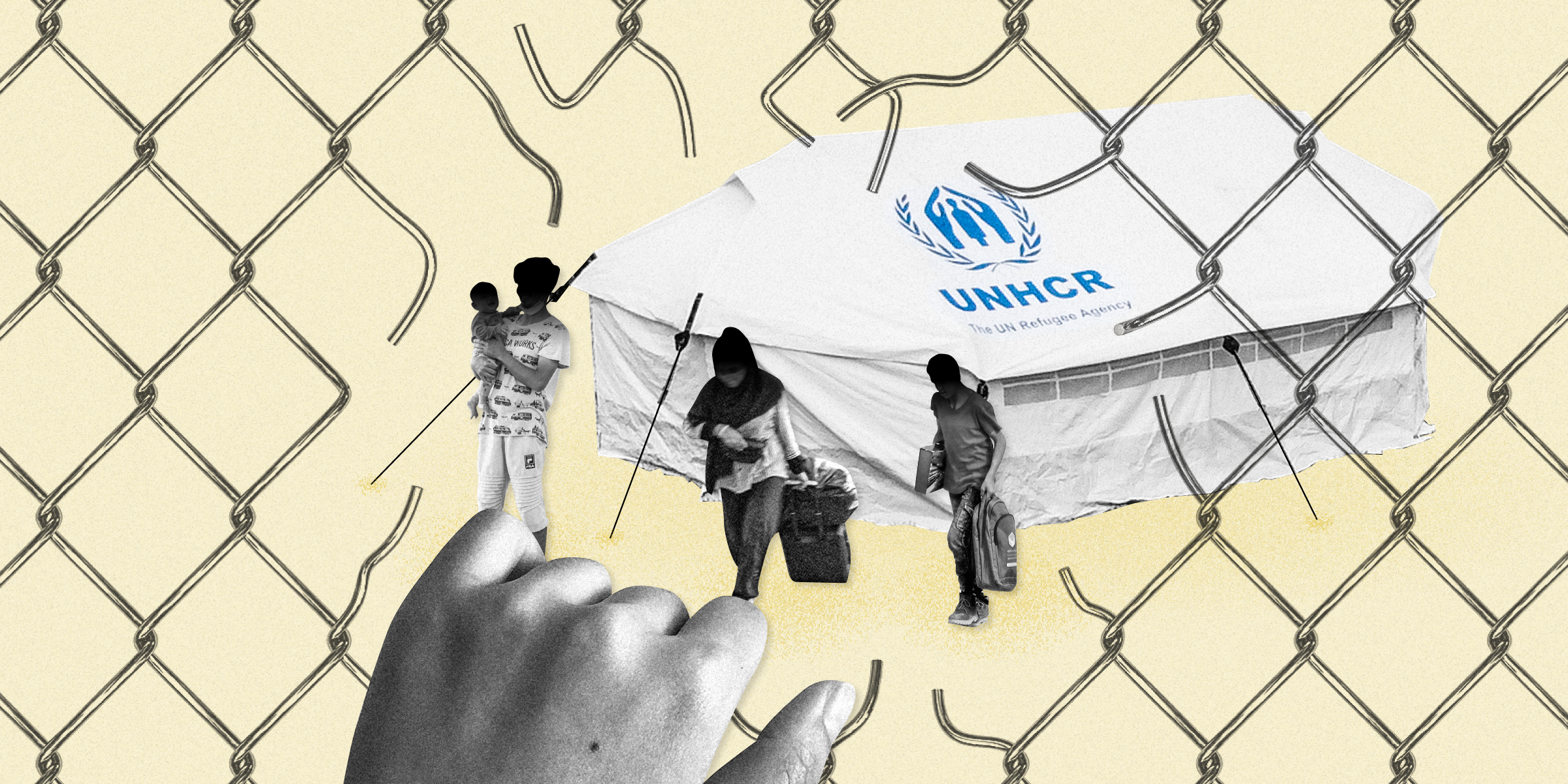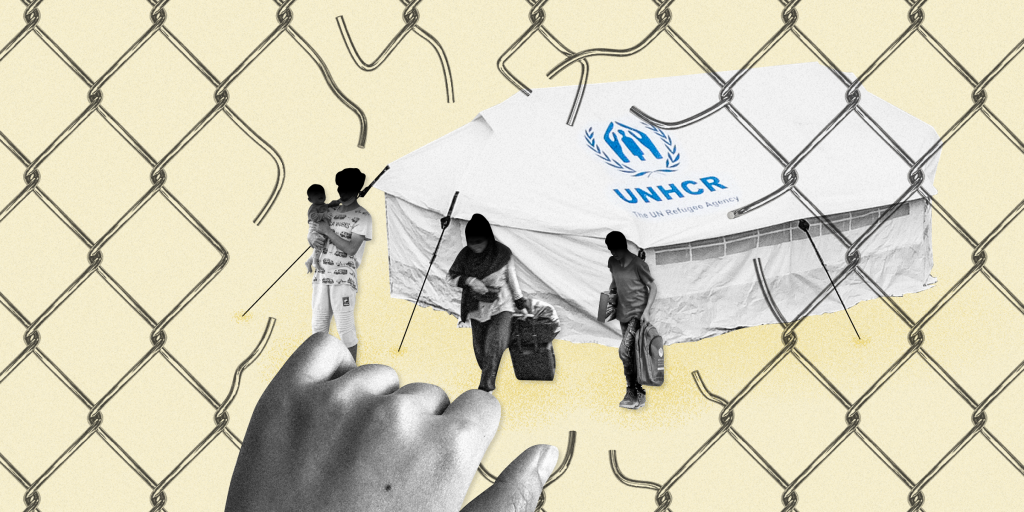
- The US refugee program has been hit hard, and resettlement agencies closed many of their offices.
- But officials say they intend to rebuild fast, with the Biden administration's help.
- It remains to be seen whether it can vet enough refugees to meet its 125,000 cap next year.
- See more stories on Insider's business page.
The United States used to resettle more refugees each year than every other country in the world combined. In 1980, more than 200,000 people fleeing war, repression, and poverty were welcomed into communities across the nation.
And while the numbers have ebbed over the years, that mission remained true for nearly four decades.
Resettlement aside, other countries host far more refugees. Turkey is home to more people displaced by the war in Syria over the past decade than the total number of people who have benefited from the US Refugee Admissions Program. It's a relative drop in the bucket in a world where a record number of people who could use the assistance.
"Resettlement is a solution that only a tiny fraction of refugees ever benefit from – less than one-half of 1% of refugees in the world are ever resettled to any country," Chris Boian, a spokesman for the United Nations' Refugee Agency, UNHCR, told Insider.
But those who do benefit may be the most vulnerable. Having already fled their homeland, they remain unsafe in their new land – often enough, a tent in a refugee camp – and are referred to the handful of governments that have resettlement programs (the number is under 30), according to the UNHCR.
"There are 1.4 million of those refugees who urgently need resettlement to a third country," Boian said. Each one the US accepts, he added, "represents a human life saved."
And the US has been, at least by one important measure, No. 1: Nobody has helped these men, women, and children more.
Then Donald Trump became president.
In his first year, for the first time, the rest of the globe got caught up in a contest that the US seemed to be trying to lose under the Trump administration. Just 33,000 people were welcomed by the US government that year - fewer than half resettled by other countries. In 2020, the Trump administration slashed the cap on refugee admissions to a historic low of 15,000. And it was prepared to go lower.
Stephen Miller, Trump's top advisor on immigration, said this year the ideal number of resettlements would be "zero": no refugees given another chance in this self-styled land of opportunity. As was made evident in numerous public statements, Miller's boss didn't care for those already here either, using his campaign rallies to launch diatribes against the Somali diaspora.
"Biden will turn Minnesota into a refugee camp," Trump warned at one event during his reelection campaign last fall.
Trump ended up losing that state by more than 7%, and the presidency with it. After four years of xenophobia, a clear majority of voters chose the candidate who did not demonize their neighbors and those families escaping war and repression, still trying to find a place to call home.
A new message to the refugee community
President Joe Biden, two weeks after taking office, issued an executive order pledging the US would accept more refugees than it had in decades: as many as 125,000 in his first full fiscal year, which starts October 2021.
"It's going to take time to rebuild what has been so badly damaged, but that's precisely what we're going to do," he said, framing the decision as a return to "moral leadership."
Alicia Wrenn, senior director of resettlement and integration at HIAS, was ecstatic.
"You can't even imagine the lifting of spirits," she told Insider, "from basically, you know, death by a thousand cuts - and not really knowing the future because we didn't know what would happen with the election - to Biden winning, and then coming out fast to the former ideals that we all understood to be American ideals until Trump."
HIAS is one of nine nonprofit refugee-resettlement agencies teaming up with the federal government to provide housing and jobs to new arrivals. Under the previous administration, there weren't many of those, which meant a slash in funding - and often staff - at those organizations.
"It was a very, very tough period of time," Wrenn said.
It's harder to rebuild a system than it is to tear it down
A spokesperson for the Office of Refugee Resettlement, an arm of the Health and Human Services Department, said the Trump administration's cuts to refugee admissions had hit the country's humanitarian infrastructure hard.
"The steady decrease in arrivals during the previous four years has resulted in decreased resettlement capacity at the local level," they said. Between 2017 and 2021, "approximately one-third of the network had to close."
World Relief, a Christian charity, had 26 offices across the US when Trump became president. By the end, it had 17.
"We had to let go of about a third of our staff," said Jenny Yang, the group's senior vice president of policy and advocacy.
That has raised the question: Can the US actually resettle as many refugees as Biden would like?
Biden himself isn't sure. In April, the new administration sent a notice to Congress that it intended, for the time being, to keep the old administration's historically low cap on refugees for this year: just 15,000, with an option to raise it later if met, not the ceiling of 62,500 the administration initially said would be the goal for this year. That same month, the US resettled fewer than 300 people, the number steadily declining since Biden took office.
"I think early in the administration, when they issued that executive order in February, he was making a lot of bold statements and commitments," Yang said. "And then I think during that time they started to become a little bit overwhelmed by what was happening at the border. And it led to them kind of backtracking on their promise."
What was happening was an influx of unaccompanied minors seeking asylum. The previous administration had simply expelled such children. The Biden administration, as part of its stated commitment to restoring the right to seek protection in the US, did not, though it has continued to expel many asylum seekers who come as families, citing a Trump-era order that largely closes the border over COVID-19.
Asylum seekers and refugees are similar: Both are fleeing conditions unfit for human beings. But the systems for dealing with them are not the same. People who want asylum declare their intent when they are already inside the country; refugees undergo interviews and security screenings (more vetting than anyone else coming to America, migrant or tourist) long before they ever step foot in the US.
The sense among refugee advocates who dealt with the White House is that it wasn't logistics - not having enough resources to assist both - but political considerations that prompted the flip-flop. It should not have come as any surprise, after all, that it would be difficult to meet the president's goals.
"The administration was well aware that the program was decimated when they committed to raising the ceiling," Yang said. And that ceiling is not, of course, a floor. There is no punishment for not meeting it. Biden has already said it would not be reached this year and maybe not in the next. The only cost might be demagoguery from some of Biden's political opponents - nativists grandstanding about the administration helping asylees and refugees and not, say, veterans without a home.
Ultimately, the Biden administration did not cave to such fears. But if it's committed to rebuilding America's refugee program, why is it still letting in so few refugees?
Challenges remain, but the outlook is promising
Officials at US refugee agencies said they would be able to meet the needs of any refugees sent their way. Rebuilding their capacity to do so is a hassle, but it has already begun. New staff are being hired, and new offices will soon be opened - the when and where hinging on support from local communities.
And partly because of the religious affiliations of some of these agencies, places of worship can help provide a steady stream of volunteers, who have formed the backbone of what is often mistakenly assumed to be a function of the state.
"We're not worried about the infrastructure in the US," said Ali Noorani, president of the National Immigration Forum, a nonpartisan think tank in Washington. "There are hundreds of thousands of Americans and hundreds of organizations across the country who are eager to help people resettle. It's more an issue of ensuring that the pipeline at the starting point is getting filled."
And that's the responsibility of the federal government.
When the UN identifies a refugee for resettlement, that's only the start of the process. When it comes to vetting a candidate, Washington does not outsource the job to a multilateral organization. Instead, it deploys agents with US Citizenship and Immigration Services, part of the Department of Homeland Security, who fly abroad and interview refugees where they are.
The pandemic has made that more difficult. But with vaccines widely available in the US, that will soon change.
Still, this is the bottleneck even in the best of times. The interviewing process can take between six months and several years. So to fill the quota for 2022 - which, for purposes of funding the US government, begins October 2021 - the process would have to begin swiftly.
"This has kind of been our frustration," Noorani said. "There's been no sense of 'OK, what are the steps that USCIS needs to take and where are they in the process?'"
USCIS did not make anyone available for an interview.
Part of the problem, though, may be a lack of leadership at the top. Biden's nominee to lead USCIS, Ur Jaddou, the agency's former chief counsel under President Barack Obama, has yet to be confirmed by Congress. Biden, meanwhile, has yet to announce an assistant secretary of state to lead the Bureau of Population, Refugees, and Migration, which oversees the entire US Refugee Admissions Program.
Wrenn, of the resettlement agency HIAS, said her group would soon be receiving from the State Department "capacity building funds so that we can actually start to hire up and train people for arrivals." For the first time, the government will also be paying its agency partners and their partners on the local level ahead of time and more consistently.
"It has historically always been a per capita system," she said. Before, "as arrivals fell, staff volume fell, because that's the way it worked." Now the plan is to provide a separate budget for the staff - social workers, language and cultural experts, educators - that will not be based, after the fact, on the exact number of refugees that agency ended up serving.
The International Rescue Committee, which works to find homes for refugees, closed three of its 29 offices in the US during the Trump years. Jennifer Sime, the group's senior vice president of resettlement, asylum, and integration, said it has been told to expect the arrival of more than twice as many refugees as seen in April.
UNHCR, which plays a part in more than half the refugees who come to America, has also started increasing its referrals to the US government.
"We are definitely seeing more people being booked to arrive, so that is encouraging," Sime said in an interview. "It is going to be a little slow going - and, primarily, it's going to be slow going because of the issues on the government side," she said.
But there is no question the program is starting up again in force after years of neglect.
Sime said, "It just takes a while for the machinery to get going again."
Have a news tip? Email this reporter at [email protected].

